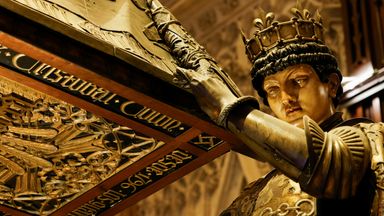Your support helps us to tell the story
Support NowThis election is still a dead heat, according to most polls. In a fight with such wafer-thin margins, we need reporters on the ground talking to the people Trump and Harris are courting. Your support allows us to keep sending journalists to the story.
The Independent is trusted by 27 million Americans from across the entire political spectrum every month. Unlike many other quality news outlets, we choose not to lock you out of our reporting and analysis with paywalls. But quality journalism must still be paid for.
Help us keep bring these critical stories to light. Your support makes all the difference.
China had a thriving cosmetics industry more than a thousand years ago, archaeologists have found.
The industry, which flourished between 618 and 907AD, produced a range of products including moisturisers made of animal fat and eyebrow enhancers using graphite powder. The products were commonly used by the wealthy non-elite of the Tang dynasty, according to a new study published in the journal Archaeological and Anthropological Sciences.
The study assessed thousands of tombs in the Tang dynasty’s capital city of Xian and found that Chinese living there not only developed cosmetic recipes but also “optimised” them.
A moisturiser product identified as ruminant fat, for example, contained a small amount of brassicaceae seed oil, which would have made it easier to spread than plain ruminant fat in the cold, dry winters of northern China.
“This indicates that the recipe of the moisturiser had been optimised,” the study said.
Archeologists also found evidence of the use of coloured cosmetics . They found some organic residues in shells made from a mixture of vegetable oil, moths, and plant extracts.
Another skincare product found at the site was likely made from a mixture of rosin and plant pigments.
The study noted that people in the Tang dynasty used products similar to today’s lipstick and blusher. “A piece of graphite ore was used as an eyebrow cosmetic and a mixture of cinnabar and animal glue was used as a lipstick or blusher,” it explained.
Some of the items, though, may have contained a mineral of mercury, which would have been toxic to its users.
“The findings suggest that the cosmetics were diverse and made from a wide range of raw materials, including plants, animals and minerals, during the Tang dynasty in China,” the study noted.
Disclaimer: The copyright of this article belongs to the original author. Reposting this article is solely for the purpose of information dissemination and does not constitute any investment advice. If there is any infringement, please contact us immediately. We will make corrections or deletions as necessary. Thank you.


